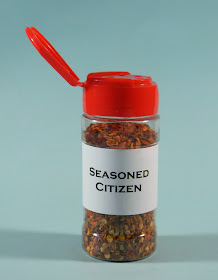Surveys about fears commonly get reported just before
Halloween. One excellent survey on Canadians done by
Insights West was reported
on October 24, 2017 in
an article unfortunately just titled
Across Canada,
Alberta is ‘Dream Province’ for Halloween Trick-or-Treaters. They surveyed 1,001
adults online (on October 18 to 22) about twenty-seven fears of things or
situations, which were:
Birds
Being alone
Being the victim of a crime
Blood
Clowns
Confined Spaces
Crowds
Darkness
Death
Dogs
Fish
Flying (Airplane/Helicopter)
Germs
Ghosts
Heights
Insects
Mice
Needles/Getting shots
Nuclear war
Open spaces
Open water (Ferry/Boat/
Public speaking
Snakes
Spiders
Strangers
Terrorism
Water/drowning
They were asked how much they feared each of them:
Very afraid
Somewhat afraid
Not too afraid
Not afraid at all
Not sure
The article reported the sum of percentages for Very afraid
and Somewhat afraid. As shown above in a bar chart, the five most common fears
were Terrorism 58%, Nuclear war 53%, Snakes and Heights both 44%, Being the
victim of a crime 41%, and Public speaking 39%. (The margin of error is plus or
minus 3.1%).
We could get even higher results by reporting the Grand sum of
percentages for Very afraid, Somewhat afraid, and Not too afraid. As shown
above in another bar chart, the five most common fears now were Terrorism 82%,
Nuclear war 81%, Being the victim of a crime 77%, Heights 72%, and both Snakes
and Public speaking at 69%.
Detailed results were presented in
a nine-page .pdf file. Those
details include results subdivided by gender (female or male), age (18-34,
35-54, 55+) and region (Atlantic Canada, Quebec, Ontario,
Saskatchewan/Manitoba, Alberta, British Columbia). I will only discuss the
gender results.



As shown above in a bar chart, for females the five most
common fears were Terrorism 64%, Nuclear war 57%, Snakes 50%, Being the victim
of a crime 49%, and Public speaking 48%, and Heights 47%. A second bar chart
shows that for males the five most common fears were Terrorism 50%, Nuclear war
49%, Heights 39%, Death and Snakes both 37%, Snakes 50%, and Being the victim
of a crime 32%. (Water/drowning was sixth 30% and Public speaking was seventh
29%. A third bar chart shows all the differences (female minus male). For 23 of
27 fears the percentage was higher for females with the largest difference
being for spiders – 42% versus 22%, a difference of 20%. Public speaking was
second largest – 48% versus 29%, a difference of 19%. (Here the margin of error
is larger +- 4.4%).
Another series of bar charts show the results for those four
different levels of fear. For Very Afraid the five most common fears were
Nuclear war 26%, Terrorism 25%, Snakes 21%, Heights 20%, and Public speaking
15%.
For Somewhat Afraid the five most common fears were
Terrorism 33%, Nuclear war and Being the victim of a crime 27%, Death 25%,
Heights and Public speaking 24%, and Snakes 23%.
For Not Too Afraid the five most common fears were Strangers
38%, Being the victim of a crime 36%, Germs 33%, Insects 32%, and a three-way
tie between Death, Darkness, and Public speaking - all at 30%.
For Not Afraid At All the five most common fears were Birds
77%, Open spaces 76%, Fish 74%, Clowns 71%, and Dogs 65%. Conversely for Not
Afraid At All the five least common fears were Terrorism and Nuclear war 15%,
Being the victim of a crime 19%, Heights 26%, Public speaking 28%, and a tie
between Death and Snakes - both 29%.
The survey also asked how much Canadians believed or
disbelieved in six things. For Believe Completely plus Believe Somewhat the
percentages were (as shown in yet another bar chart): 65% for That there is
some form of life after death, 57% for Angels, 47% both for Ghosts (of any
kind) and Haunted places, 43% for Demonic spirits, 41% for The Devil (or
Satan), and just 7% for Zombies.
Yet another series of questions asked how you dealt with
these fears in the past. As shown above in a chart, the percentages were: 45%
for None of these, 30% for Asked another person to get rid of an
insect/bug/spider, 23% for Altered your plans to avoid a thing or situation,
17% for Experienced a panic attack, 14% for Came close to losing it in front of
others, 12% for Used stairs instead of an elevator to avoid being in a confined
space.
























